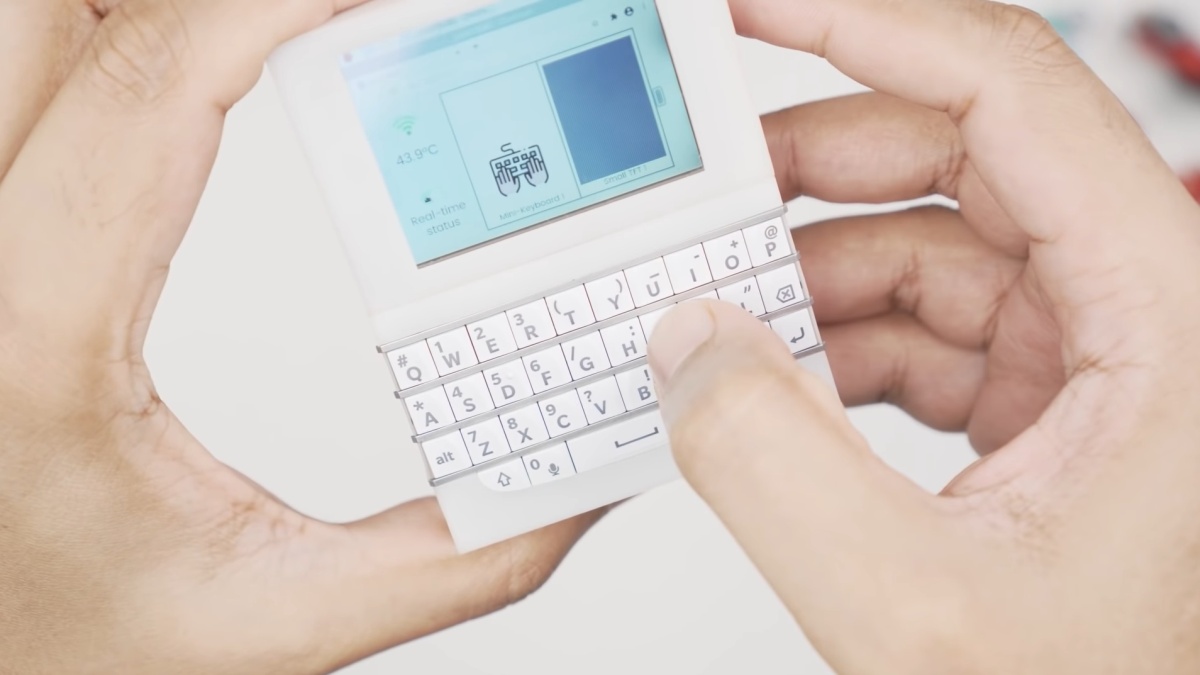Pockit is a tiny, modular computer with dozens of blocks that snap into place to add functionality

[ad_1]
Modular computers and mobile devices haven’t really taken off in a big way, but it’s not for lack of trying. Google may have scrapped its Project Ara modular smartphone project years ago, but niche laptops with modular ports like the Framework Laptop and GPD Pocket 3 are now available, and smaller companies like Fairphone and Pine64 sell phones with upgradeable and replaceable components.
Pockit is a different kind of modular platform. It’s a system that lets you snap together a series of blocks to add or remove hardware to a compact computer system. It’s been under development since 2019, but developer Anil Reddy says the hardware designs have been finalized, an initial batch will be produced soon, and a new demo video shows what’s possible with the Pockit ecosystem.

For example, a kit powered by a Raspberry Pi 4 Compute Module can be configured for use as a handheld computer with a small screen and a QWERTY keyboard, or as a phone or tablet-like device with a larger touchscreen display simply by snapping the appropriate modules onto the backplane.
Attach a battery block and you’ve got a mobile device for use on the go. Or if you don’t need a standalone computer, you could use the Pockit system as an IoT device by attaching a set of blocks including sensors, cameras, microphones, speakers, or other gear.

For example, the demo video shows a Pockit system being used to control smart lights and a fan via voice controls simply by swapping out blocks.
Some other blocks let you add things like HDMI or USB ports, an SD card reader or even an SSD. Each block snaps into place magnetically, and they’re able to communicate with each other.
PocKit isn’t just a Raspberry Pi-powered computer that can switch between desktop and mobile use. It’s the system that allows you to mix and match modules that can alter the functionality of hardware, enabling “fast hardware prototyping.”
As enticing as it is to think about a future where you could add or remove smartphone cameras, sensors, or other gear by simply replacing a block, this sort of system seems to be more clearly aimed at developers, makers, educators, and students.

Each module is a 3D printed enclosure that houses the appropriate circuitry and a system of magnets that allow you to snap hardware into place to design and test your own hardware. At this stage I wouldn’t expect the resulting creations to hold up well in your pocket or to survive a fall onto concrete. But I highly recommend giving the video a watch, because it’s mesmerizing to see just how versatile the latest prototype is.
When Anil Reddy first showed off the Pockit ecosystem last year, it was powered by a Raspberry Pi Compute Module 3+, but since then he’s upgraded the system to feature a more powerful Raspberry Pi CM4.

He’s also made a new user-friendly, web-based Dashboard for monitoring and configuring the system. Accessible on the device itself or from another computer connected to the same network, the Dashboard shows which blocks are connected and lets you set applications that can be used with the available hardware.
You can use the dashboard to detect which blocks are connected and configure applications that work with each.
You can find more details about the project at the Pockit blog or by following the developer’s YouTube channel.
via /r/sffpc, Hacker News, /r/Linux, and MiniMachines
This article was originally published March 23, 2021 and most recently updated March 10, 2022.
[ad_2]
Source link







